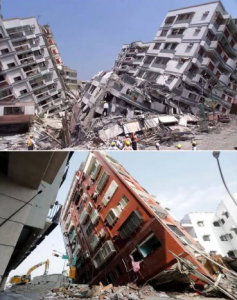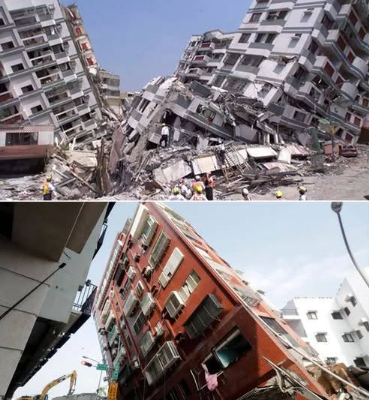🌍 BREAKING NEWS: Catastrophic Earthquake Devastates Central Myanmar—A Region Shaken to Its Core
On March 28, 2025, at precisely 12:50 p.m. local time, the earth beneath central Myanmar ruptured with terrifying force. A magnitude 7.7 earthquake struck near the city of Mandalay, unleashing destruction on a scale not seen in over a century. The tremors reverberated across borders, shaking Thailand, Bangladesh, Laos, and parts of China. It was the strongest earthquake to hit Myanmar in over 100 years—and one of the deadliest in the world this decade.
📍 Epicenter of Chaos
The quake’s epicenter was located just 17 kilometers from Mandalay, along the notorious Sagaing Fault, a tectonic boundary between the Indian and Eurasian plates. This fault has long been a source of seismic activity, but this event was different. The quake struck at a shallow depth of just 10 kilometers, meaning the seismic energy had little time to dissipate before reaching the surface.
The result? Catastrophic ground shaking that toppled buildings, split highways, and triggered fires across multiple regions. According to the , a second quake of magnitude 6.4 followed just 12 minutes later, compounding the destruction and disrupting rescue efforts.
🧱 Myanmar’s Worst Earthquake in Over a Century
The scale of devastation is staggering. Over 3,768 people died, and more than 5,100 were injured across Myanmar. Entire neighborhoods were flattened. In Mandalay’s Sein Panyat district, 400 homes were destroyed within minutes. Thousands of monasteries, schools, and hospitals collapsed. Even the capital’s newly built airport suffered structural failure.
The video offers a harrowing visual account of the destruction, showing collapsed buildings, overwhelmed hospitals, and families searching for loved ones in the rubble.
🇹🇭 Bangkok Shaken: Thailand Feels the Shock
The quake’s reach extended far beyond Myanmar. In Bangkok, Thailand, a high-rise building under construction collapsed, trapping dozens of workers. Panic spread across the city as tremors shook skyscrapers and sent people fleeing into the streets.
The video captures the chaos in real time—sirens blaring, emergency crews rushing to collapsed sites, and terrified residents recounting their experience.
At least 30 people died in Thailand, with dozens more injured. The Thai government deployed military units to assist in rescue operations and stabilize damaged infrastructure.
🧠 Understanding the Earthquake: What Happened Beneath the Surface
The earthquake was caused by strike-slip faulting, where tectonic plates slide past each other horizontally. The Sagaing Fault, which runs north-south through Myanmar, is one of the most active fault lines in Southeast Asia.
The video explains the science behind the quake, detailing how shallow depth and fault mechanics contributed to the intensity of ground shaking.
Meanwhile, draws parallels between Myanmar’s Sagaing Fault and California’s San Andreas Fault, highlighting the global relevance of seismic preparedness.
🆘 Humanitarian Crisis Unfolds
The earthquake struck a region already grappling with conflict and displacement. Myanmar’s military junta declared a state of emergency in six regions, including Mandalay, Sagaing, and Naypyidaw. Over 28 million people now require humanitarian assistance.
The United Nations and NGOs rushed to deliver aid, but damaged roads and ongoing aftershocks hampered efforts. The video shows how rescue teams are navigating collapsed infrastructure and coordinating relief in real time.
🏥 Hospitals Overwhelmed
Medical facilities were among the hardest hit. Hundreds of hospitals collapsed or became structurally unsafe. Makeshift clinics were set up in tents and schoolyards. Doctors worked around the clock, often without electricity or running water.
The video highlights the heroic efforts of medical staff treating patients amid chaos, and the urgent need for international medical support.
🔥 Fires and Secondary Disasters
The quake triggered multiple fires, particularly in densely populated urban areas. Gas lines ruptured, electrical systems short-circuited, and entire blocks went up in flames. In Mandalay, firefighters battled blazes while aftershocks continued to shake the ground.
The cascading effects of the quake—fires, landslides, and water contamination—have turned a natural hazard into a full-blown humanitarian disaster.
🌐 Global Response and Solidarity
Countries around the world have pledged support. The U.S., Japan, and Australia sent search-and-rescue teams. ASEAN nations coordinated emergency aid shipments. Social media campaigns raised millions in donations within hours.
The video offers a sobering reminder that such disasters are not isolated. It explores historical patterns and urges global preparedness for future megaquakes.
🧭 What Comes Next: Rebuilding and Reflection
As the dust settles, Myanmar faces a long road to recovery. Rebuilding infrastructure, restoring services, and healing trauma will take years. But the earthquake has also sparked conversations about seismic resilience, building codes, and disaster preparedness.
Experts warn that the Sagaing Fault remains active, and future quakes are likely. The region must invest in early warning systems, earthquake-resistant architecture, and community education.
💬 Final Reflections: A Wake-Up Call for the Region
This earthquake was more than a geological event—it was a wake-up call. It exposed vulnerabilities, tested resilience, and reminded the world of nature’s unpredictable power. But amid the devastation, stories of courage, solidarity, and hope continue to emerge.
From the first responders pulling survivors from rubble to the families sharing food with strangers, the human spirit endures. And as Myanmar begins to rebuild, the world watches—not just in sympathy, but in solidarity.


